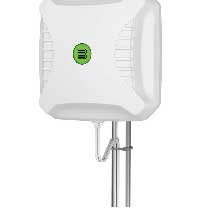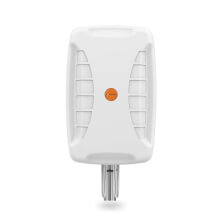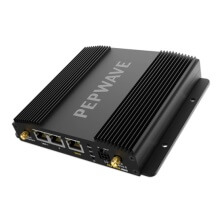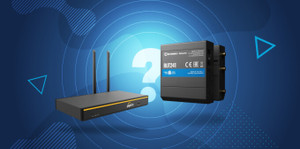5G Fixed Wireless Access: A Wired Internet Alternative
Bridging the Internet Gap with 5G Fixed Wireless Access
Wired broadband is the standard for many households and businesses. Though, it is not readily available for all. For some, wired broadband access is limited due to a lack of infrastructure. For others, wired broadband is too slow or expensive. Luckily there are other ways to connect to the internet. 5G Fixed Wireless Access is an efficient, reliable, and affordable alternative to wired internet.
Take advantage of our system design and installation services. Learn more or call us for a free consultation: 1-800-969-8189.
What is 5G Fixed Wireless Access (FWA)?
5G Fixed Wireless Access, FWA for short, is a wireless technology that enables fixed wireless broadband connectivity via the 5G network rather than cables or fiber. It helps service providers get reliable internet to homes and businesses in areas where cable or fiber is too expensive to deploy as well as areas with little infrastructure.
FWA is nothing new. It was also implemented with 4G. While 4G FWA was mostly seen as a backup method by many businesses, 5G FWA is seen as a true alternative to wireline broadband.
Ericsson states that in 2022, there were 100M FWA connections globally. 88M represent 4G FWA connections while 19M represent 5G FWA connections. The number is expected to continue growing. By 2028, 300M FWA connections, where 64M account for 4G FWA and 236M account for 5G FWA, are expected globally.
How Does 5G FWA Work?
5G FWA relies on frequency waves broadcasted by base stations (cell towers). An FWA receiver (cellular router or gateway) installed in your home or business picks up the signals and converts them to internet access. Devices connected to the receiver, such as smartphones, tablets, and laptops, can enjoy reliable high-speed internet connectivity.
The 5G frequencies used to link the base station and receiver affect connectivity speed, how far the signals can travel, and where it is deployed.
There are three flavors of 5G:
- Low-Band 5G, 600 MHz to 1 GHz frequency range, offers the slowest speeds but longest range. These signals can travel hundreds of square miles and deliver speeds ranging from 50 to 250 Mbps. This 5G range does a great job of delivering 5G to those in rural and suburban areas. Since this range of 5G uses similar spectrum as 4G, deployment is made simpler and faster by using exciting infrastructure.
- Mid-Band 5G, 1 GHz to 6 GHz frequency range, is considered to be the Goldilocks band and perfect for 5G FWA. It offers a great balance between speed and range. Signals can travel several miles and speed can range between 300 Mbps to 1 Gbps. It also has greater capacity than Low-Band 5G and 4G. While the main application for Mid-Band 5G is suburban areas and cities, it can also be used to cover rural areas.
- High-Band 5G, 24 GHz to 53 GHz frequency range, uses the mmWave spectrum. This is new spectrum made available for 5G. These high frequencies offer incredible capacity, which allows for ultra-fast speeds. The cost is range. High-Band 5G delivers speeds upwards of 1 Gbps under optimal conditions, rivaling wireline broadband services. Though, they can only travel less than a mile. Obstacles, like trees, buildings, and the like easily degrade these signals. Because of these characteristics, High-Band 5G is best for metropolitan deployment. Traditional cell towers can't be used to broadcast these signals, lots of small cells, installed on building roofs, street lights, and utility poles, are needed.
The exact frequencies used depend on the operator's service.
If the signals are having a hard time reaching the receiver due to building materials and other obstacles, integrating an external mimo cellular antenna will help deliver better results. Here are our top recommendations:
Bolton Technical Crossbow 5G
Best for:
- Homes and commercial buildings.
- Areas with poor cellular signal.
- Environments with distant cell towers.
- 2X2 MIMO cellular routers.
The Crossbow 5G is a directional 2x2 MIMO antenna. It will deliver a stronger signal directly to your FWA router for increased performance.
This antenna features up to 11 dBi of gain, allowing it to communicate with cell towers located up to 5 miles away. This makes the Crossbow perfect for environments where cell towers are far and cell signal is weak. It’ll work in areas with strong cellular reception but building material blocks signal from reaching router.
When tested, we saw significant improvements in upload and download speeds in an area with extremely poor cellular reception. It works with 4G and 5G signals across the 617-3800 cellular frequencies, ensuring you get the best of the best.
The Crossbow is available in two versions. The most popular version includes a 16 ft Twin HDF-195 cable with SMA-Male connectors. Great for SMA-Female MIMO cellular routers, as well as TS-9 routers with the use of an adapter. The second version comes with twin N-Female ports without cables, allowing you to choose a longer cable for long cable runs.
Poynting XPOL-24 5G
Best for:
- Homes and commercial buildings.
- Areas with poor cellular signal.
- Environments with distant cell towers.
- 4X4 MIMO cellular router.
The directional Poynting XPOL-24-5G is as powerful as the Bolton Crossbow, but bigger. Rather than housing two receiving and transmitting antennas, it has four receiving and transmitting antennas. It’s ideal for 4x4 cellular routers receiving weak cell signal due to building material or cell tower distance. Designed to capture all cellular signals within the 617-4200 MHz bandwidths, this antenna will deliver superior 4G and 5G reception to your 4x4 router.
What’s the Difference Between 5G FWA and Wired Broadband?
5G FWA offers a way to access the internet wirelessly using cellular frequencies. Routers communicate with cellular towers. Cables are not needed. Fixed wired broadband, on the other hand, uses cable or fiber lines to transmit data. Unfortunately, laying out cable is a lengthy process and not possible in some areas. For those areas where cable can't reach or is not currently available, 5G FWA can be used to deliver fast, reliable internet.
What’s the Difference Between 5G FWA and 5G Mobile Broadband?
Fixed wireless broadband and mobile broadband function the same way. They both provide a way to access the internet wirelessly using towers. The main difference between the two lies in where it can be used.
With 5G FWA, your connection is limited to a single fixed location, like your home or business. Mobile broadband is more flexible. It can be used to keep devices connected to the internet while on the go or in places other than your home or business. This could be in your RV, a coffee shop, the airport, or a hotel room.
In general, FWA is faster and more reliable than mobile broadband.
What are 5G FWA Benefits and Limitations?
There are many benefits and limitations to 5G FWA:
Benefits:
- Provides reliable internet connectivity to underserved areas.
- Provides reliable internet connectivity to areas without internet infrastructure.
- Equipment does not need cables for internet access, enabling an easy installation.
Limitations:
- Performance will vary across the frequency bands used.
- Obstacles can affect the received signal. Users may need to install an external antenna on their home or business to receive the best signal possible.
Who Provides 5G FWA Services?
Some providers that offer 5G FWA include AT&T, T-Mobile, Verizon, and Starry. We recommend you contact your preferred provider for detailed information on their FWA offerings.
You can also set up a 5G FWA network with a third-party cellular router. Here is our most popular 5G router:
Peplink MAX BR1 Pro 5G Cellular Router
Best for:
- Homes who need a cellular router that can handle data intensive applications.
- Small businesses who need a dependable cellular router capable of providing unbreakable connectivity.
The Peplink BR1 PRO 5G is a 5G router for high bandwidth needs. It supports two SIM cards and one WAN connection. It’ll keep devices connected using 5G and 4G cellular bands. No matter where you are, rural, suburban or urban, you’ll always receive the strongest signal possible. Equipped with WiFi 6 technology, it offers the greatest performance. Speeds can reach up to 4 Gbps down/700 Mbps up. You can choose from different cellular antennas to capture the strongest incoming cellular signal for optimal results.
Contact Us
Signal Boosters is a leading provider of cell phone signal boosters, cellular routers, and cellular antennas. We’re here to help with your wireless connectivity needs. If you have any questions, please call us (1-800-470-6777), email us (info@signalboosters.com), or chat with us. We’re happy to help!
Interested in Learning More? Check Out Our Cellular Info Hub / WiFi Info Hub








